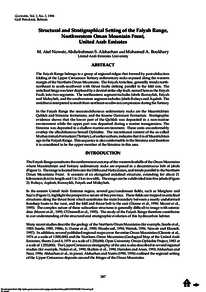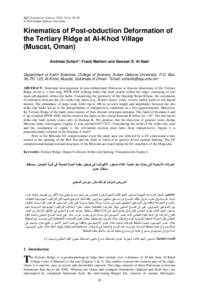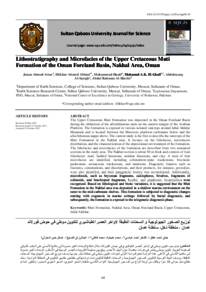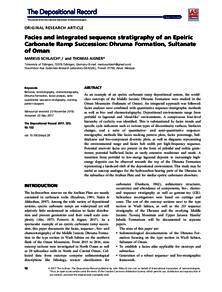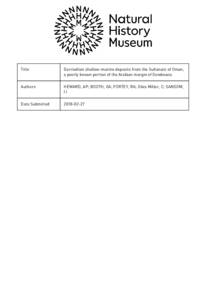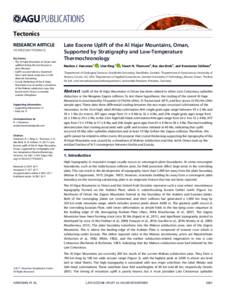Document
Structural and stratigraphical setting of the faiyah range, northwestern Oman Mountain front, United Arab Emirates.
Identifier
DOI: 10.2113/geoarabia0303387
Source
GeoArabia. v. 3, 3, p. 387-398
Contributors
Alsharhan, Abdulrahman S. , Author
Boukhary, Mohamed A. , Author
Country
Bahrain.
City
Manama
Publisher
Gulf Petrolink.
Gregorian
1998-07-01
Language
English
Subject
English abstract
The Faiyah Range belongs to a group of regional ridges that formed by post-obduction folding of the Upper Cretaceous-Tertiary sedimentary rocks exposed along the western margin of the Northern Oman Mountains. The Faiyah Anticline, generally trends north-northeast to south-southwest with thrust faults striking parallel to the fold axis. The anticlinal hinge was later displaced by a dextral strike-slip fault, named here as the Faiyah Fault, into two segments. The northeastern segment includes Jebels Rumaylah, Faiyah and Mulayhah, and the southwestern segment includes Jebels Buhays and Aqabah. The anticline is interpreted to result from northeast-southwest compression during the Tertiary. In the Faiyah Range the neoautochthonous sedimentary rocks are the Maastrichtian Qahlah and Simsima formations, and the Eocene Dammam Formation. Stratigraphic evidence shows that the lower part of the Qahlah was deposited in a non-marine environment while the upper part was deposited during a marine transgression. The Simsima was deposited in a shallow-marine environment. These units unconformably overlap the allochthonous Semail Ophiolite. The microfaunal content of the so-called Muthaymimah Formation (?Tertiary), of earlier authors, indicates that it is of Maastrichtian age in the Faiyah Range. This sequence is also conformable to the Simsima and therefore it is considered to be the upper member of the Simsima in this area.
ISSN
1025-6059
Category
Journal articles

